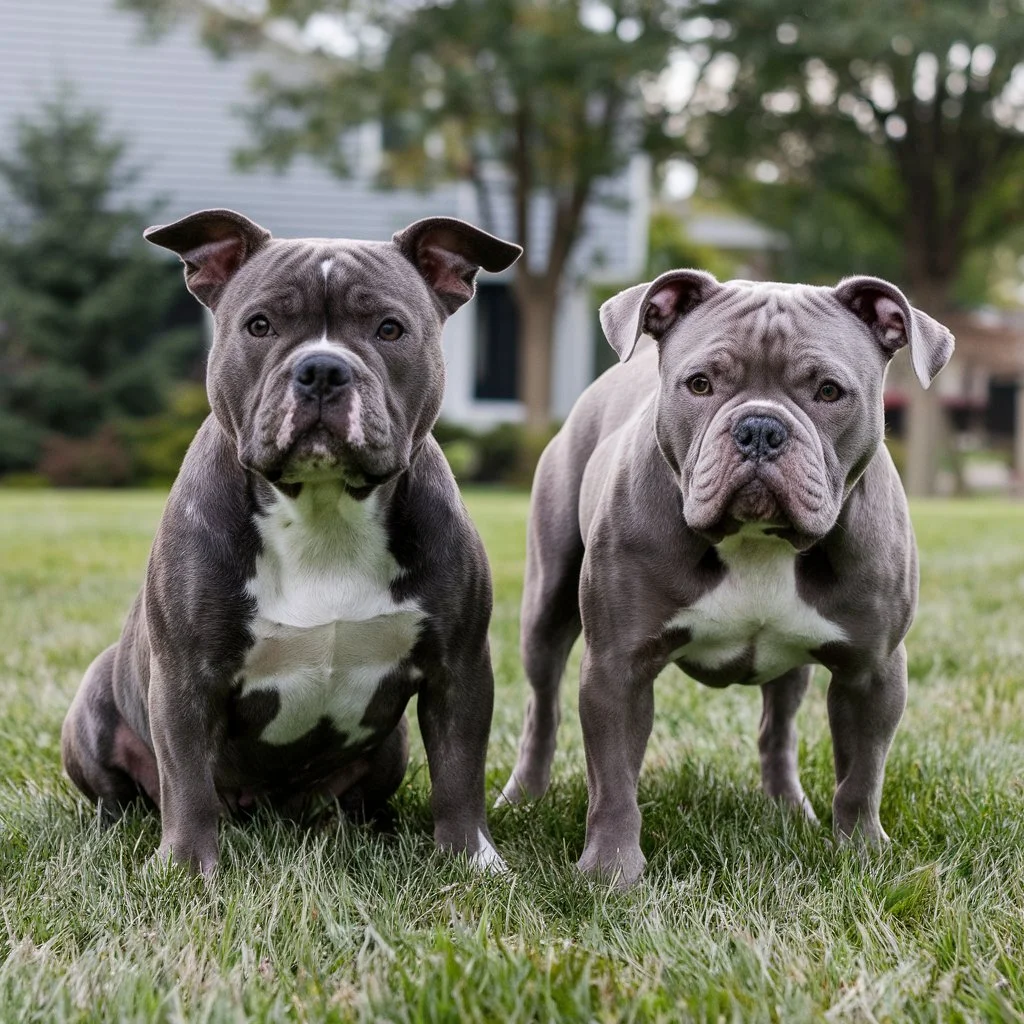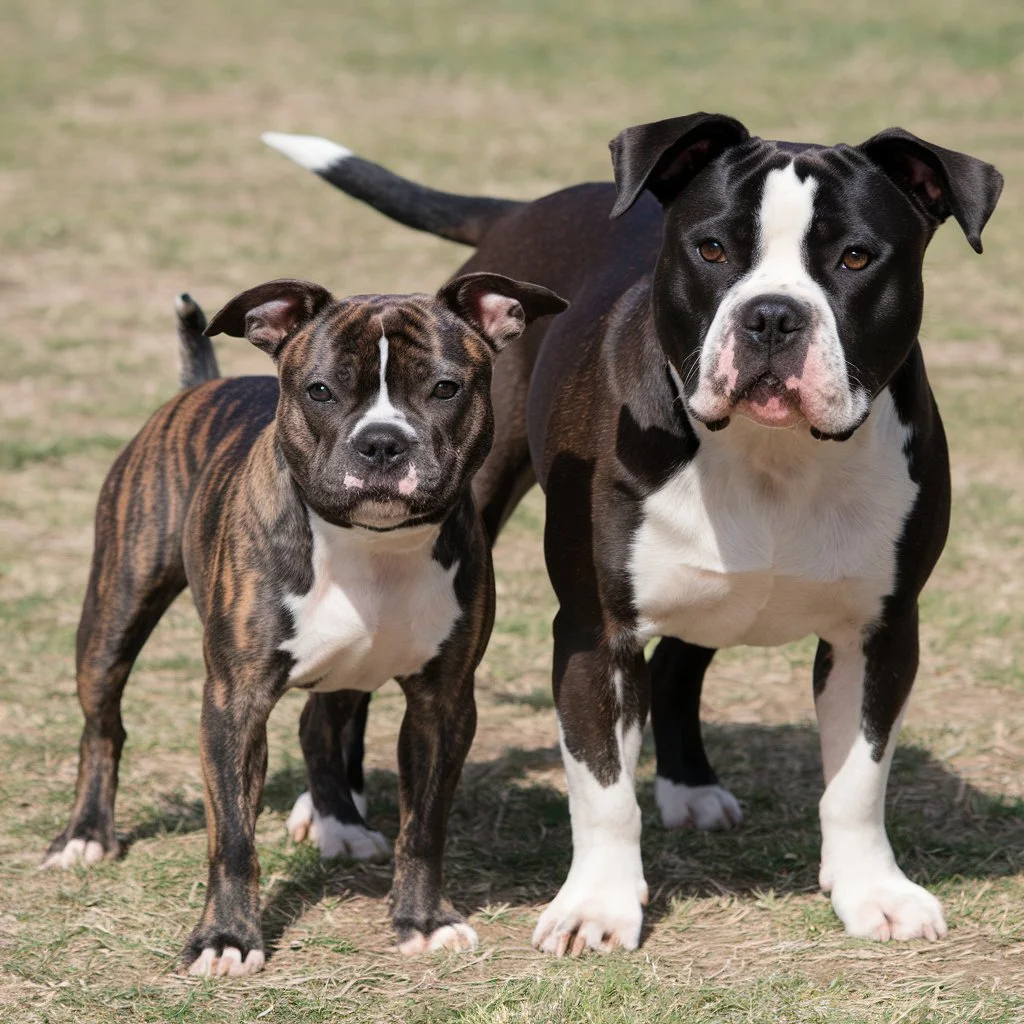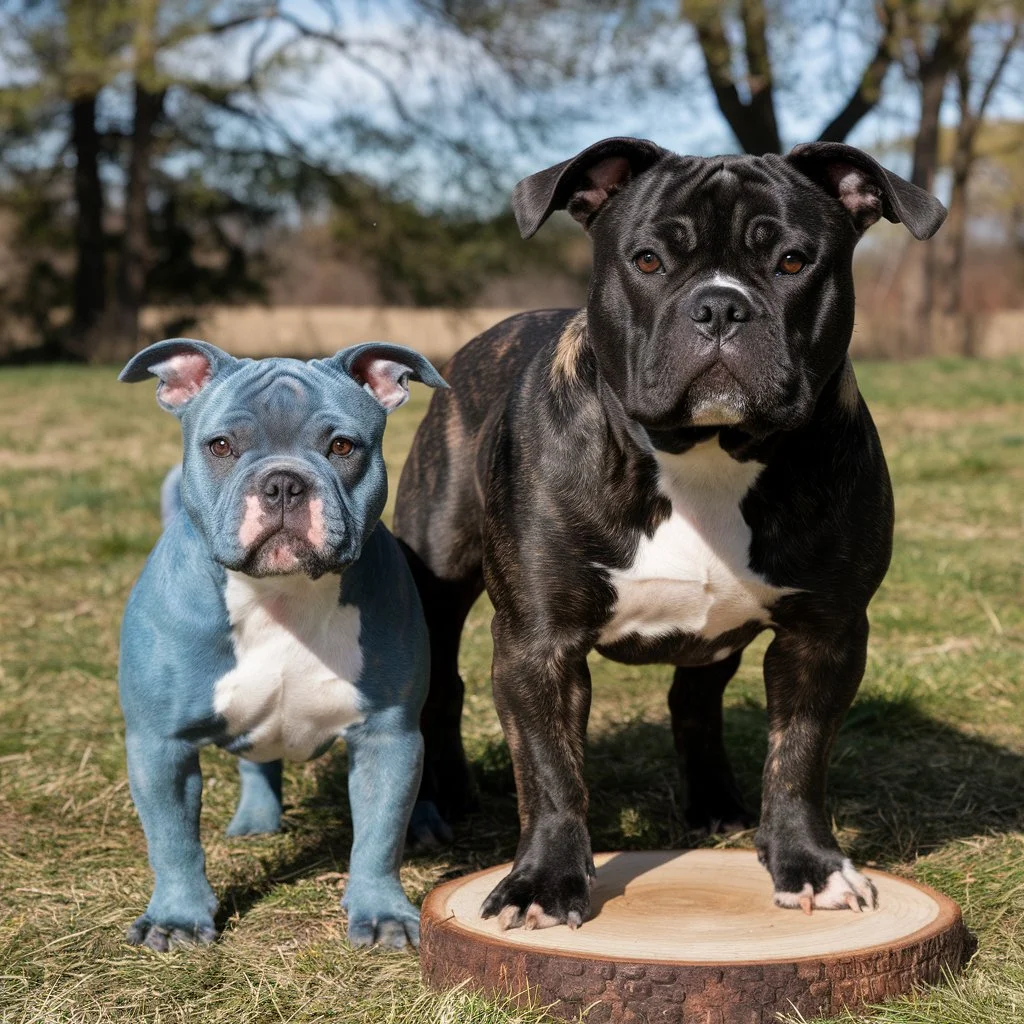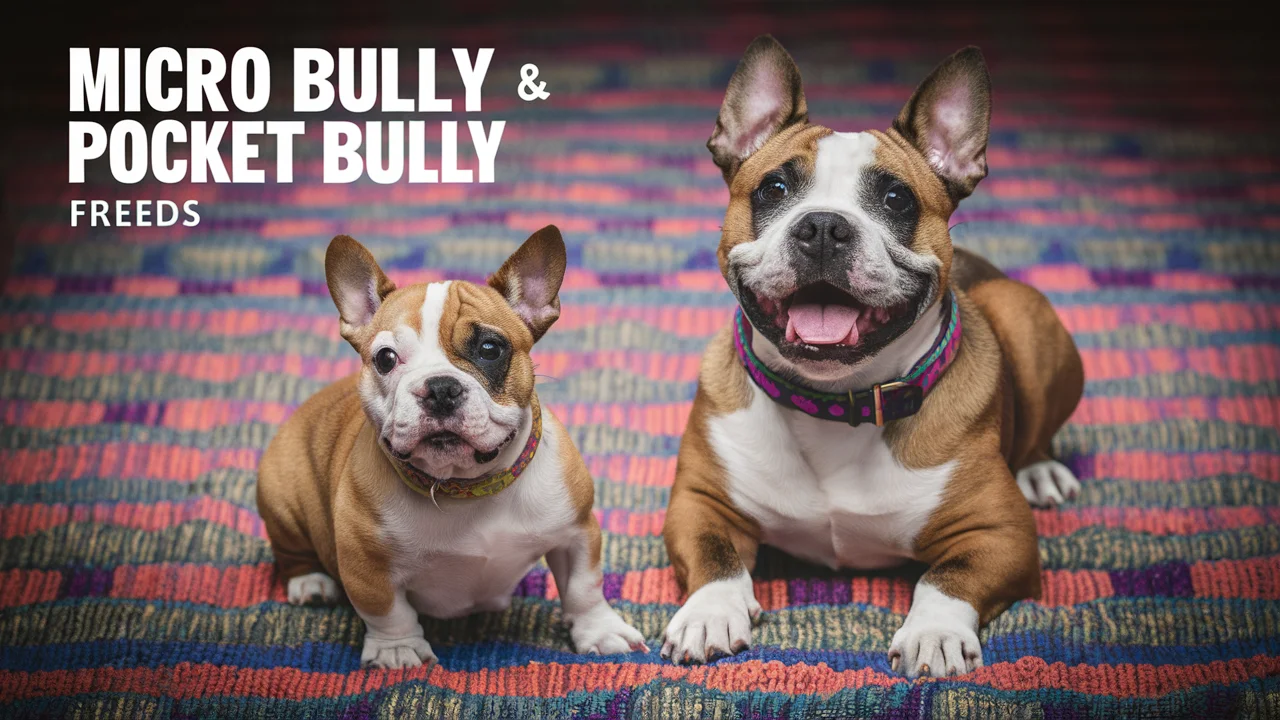When it comes to compact dog breeds, Micro Bullies and Pocket Bullies are often at the forefront of discussions among dog lovers. These breeds offer a combination of charm, loyalty, and a playful spirit, making them excellent companions for many households.
However, potential owners often find themselves asking, “Which breed is smaller, and which one is right for me?” This blog post dives deep into the characteristics of both breeds, providing comprehensive insights to help you make an informed decision.
Breed History
Origins of Pocket Bully
The Pocket Bully is a relatively recent addition to the world of dog breeds, primarily developed in the United States during the early 2000s. This breed is a variant of the American Bully, which itself has roots in the American Pit Bull Terrier and the American Staffordshire Terrier. Breeders aimed to create a compact version that retains the muscular build and loyal temperament of its larger counterparts.
Key factors in the development of the Pocket Bully include:
- Selective Breeding: Breeders focused on size while maintaining the breed’s distinct characteristics, such as strength and agility.
- Popularity Among Dog Enthusiasts: The unique appearance and friendly nature of Pocket Bullies quickly gained popularity, leading to increased demand for this breed.
Origins of Micro Bully

The Micro Bully, on the other hand, is an even smaller variant, often considered a more extreme version of the American Bully. These dogs emerged as breeders sought to produce an even more compact and visually striking version of the American Bully. The Micro Bully typically stands 10 to 14 inches tall and is characterized by its broad chest and powerful stance.
Important points regarding the Micro Bully’s history include:
- Focus on Size: Breeders specifically targeted the goal of creating a breed that would fit in smaller living spaces while still showcasing a robust appearance.
- Community of Enthusiasts: The Micro Bully community has grown significantly, leading to dog shows and social media groups dedicated to showcasing this unique breed.
Physical Features
Size Comparison
When comparing the Micro Bully and the Pocket Bully, size plays a crucial role. Here’s a quick reference table for height and weight:
| Breed | Height | Weight |
| Pocket Bully | 14-20 inches | 30-60 pounds |
| Micro Bully | 10-14 inches | 20-40 pounds |
As indicated, the Micro Bully is significantly smaller than the Pocket Bully. This size difference affects not just their appearance but also their suitability for different living environments.
Body Structure
The Pocket Bully has a well-defined muscular body, characterized by a broad chest and strong legs. This breed is known for its stocky build, which exudes strength while remaining compact. Their short coat is easy to maintain, with colors ranging from solid to brindle.
In contrast, the Micro Bully features an even more exaggerated muscular structure. This breed typically has a broader head and shorter legs compared to the Pocket Bully, emphasizing its compact size. The Micro Bully’s appearance is often described as “bully” due to its stocky build, which gives it an imposing presence despite its small stature.
Temperament
Personality Traits of Pocket Bully
The Pocket Bully is known for its affectionate and loyal temperament. These dogs are typically:
- Friendly: They tend to get along well with children and other pets.
- Energetic: Pocket Bullies require regular exercise to channel their energy positively.
- Protective: They often develop a strong bond with their families and can be protective when necessary.
Personality Traits of Micro Bully

The Micro Bully shares many temperament traits with the Pocket Bully but also has some distinct characteristics:
- Playful: They are known for their playful demeanor, making them great companions for families.
- Loving: Micro Bullies are often described as “lap dogs” due to their affectionate nature.
- Sociable: They usually enjoy interacting with people and can be quite outgoing.
Both breeds require socialization from an early age to ensure they grow up to be well-rounded adults. Positive reinforcement training is highly recommended for both breeds to foster a strong bond with their owners.
Trainability
Trainability of Pocket Bully
The Pocket Bully is relatively easy to train due to its intelligent nature. However, consistency and patience are key. Here are some effective training tips:
- Start Early: Begin training when they are puppies to instill good habits.
- Use Positive Reinforcement: Reward-based training helps motivate them.
- Short Training Sessions: Keep training sessions brief (10-15 minutes) to maintain their attention.
Trainability of Micro Bully
Similarly, the Micro Bully is also trainable but may require a bit more effort due to its stubborn streak. Here are some strategies to enhance training effectiveness:
- Be Patient: Some Micro Bullies may take longer to grasp commands.
- Incorporate Play: Use games to make training fun and engaging.
- Socialize Regularly: Expose them to various environments and people to build confidence.
Both breeds benefit from consistent training methods, and early socialization is essential for developing a well-adjusted dog.
Exercise Requirements
Exercise Needs of Pocket Bully
Pocket Bullies are energetic and require regular physical activity to stay healthy. Here’s a quick guide on their exercise needs:
- Daily Walks: Aim for at least 30-60 minutes of exercise each day.
- Playtime: Engage in interactive play sessions, such as fetch or tug-of-war.
- Mental Stimulation: Puzzle toys and training games can help keep their minds sharp.
Exercise Needs of Micro Bully

Micro Bullies also need exercise, but their smaller size allows for shorter, yet still active, sessions:
- Shorter Walks: 20-30 minutes of walking is typically sufficient.
- Interactive Play: They enjoy playtime, so activities like chasing toys or running in a secure area are beneficial.
- Indoor Play: Due to their size, they can get adequate exercise indoors through games and activities.
Overall, both breeds need regular exercise to maintain their health and well-being.
Grooming
Grooming Needs of Pocket Bully
Pocket Bullies are low-maintenance in terms of grooming. Their short coat requires minimal upkeep:
- Brushing: Brush once a week to remove loose hairs.
- Bathing: Bathe every few months or as needed to keep their coat clean.
- Nail Care: Regularly trim nails to prevent overgrowth.
Grooming Needs of Micro Bully
Micro Bullies share similar grooming needs with Pocket Bullies. Here’s a concise grooming checklist:
- Brushing: Weekly brushing is also recommended for Micro Bullies.
- Bathing: They should be bathed occasionally to keep their skin healthy.
- Ear Cleaning: Regularly check and clean ears to prevent infections.
Both breeds are considered low-shedding, making them suitable for individuals with allergies.
Health
Common Health Issues in Pocket Bully
Like all breeds, Pocket Bullies are prone to specific health issues. Some common concerns include:
- Hip Dysplasia: A genetic condition affecting the hip joint, leading to arthritis.
- Skin Allergies: Sensitivities that can cause itching and discomfort.
- Heart Disease: Certain conditions may develop, requiring regular veterinary check-ups.
Regular health checks and a balanced diet are crucial for maintaining their health.
Common Health Issues in Micro Bully
Micro Bullies face similar health challenges but also have unique considerations:
- Brachycephalic Issues: Due to their short snouts, they may experience breathing difficulties, especially in hot weather.
- Joint Problems: Like their larger counterparts, they can develop hip dysplasia.
- Obesity: Their smaller size can lead to weight-related issues if not properly managed.
Maintaining a healthy diet and providing regular veterinary care are essential for both breeds.
Which One Is The Right Dog For You?
Factors to Consider
When deciding between a Micro Bully and a Pocket Bully, several factors should influence your choice:
- Living Space: Micro Bullies are more suited for smaller apartments due to their compact size, while Pocket Bullies can adapt to various living conditions.
- Activity Level: Consider your lifestyle. If you lead an active life, both breeds can keep up, but the Pocket Bully may require more exercise.
- Family Dynamics: Both breeds are good with families, but Pocket Bullies tend to be more protective.
Making the Choice
To assist in making your decision, here’s a summary of pros and cons for each breed:
| Breed | Pros | Cons |
| Pocket Bully | Larger size, great temperament | Requires more space and exercise |
| Micro Bully | Compact, excellent for small homes | May have breathing issues |
Ultimately, both breeds can make wonderful companions, but your choice should reflect your lifestyle and living situation.
Conclusion
In conclusion, both the Micro Bully and the Pocket Bully offer unique advantages for dog lovers. While the Micro Bully is more compact and easier to manage in smaller spaces, the Pocket Bully boasts a larger size and can be more protective.
By considering factors such as breed history, physical features, temperament, trainability, exercise requirements, grooming, health, and your own lifestyle, you can make an informed decision.
Each breed has its charm, and regardless of which one you choose, you’ll be gaining a loyal companion that brings joy to your life. So, take your time, assess your needs, and get ready to welcome a new furry friend into your home!












